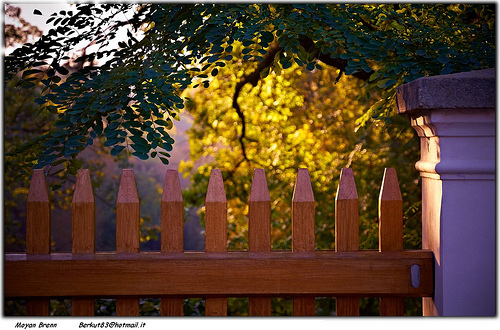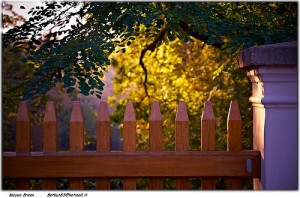
One of the most common points of dispute between neighbors comes from the growth of trees, shrubbery, and bushes. The planting of an acorn five feet from a property border may be meaningless in the life of the planter. However, as that tree grows several problems often arise. 
1. The neighbor, who used to enjoy sitting in the sun in his or her backyard, or at a pool, does not appreciate shade for most of the day.
2. The neighbor does not appreciate that branches from the tree have grown over into his or her yard, rubbing against the roof and dropping leaves, branches and debris.
3. A storm causes large branches to drop damaging items in the yard, or perhaps the house. The neighbor fears for the safety of his or her family.
4. The neighbor’s view has been obstructed.
How are these issues resolved? What do the Courts say?
I will address the following:
- Do trees support adverse possession claims?
- Can you cut a neighbors branches, roots or trunk?
1. Do trees support adverse possession claims? Here is the fast answer—-NO.
In a footnote to a Superior Court decision (Jones v. Wagner, 425 Pa. Super. 102, 624 A.2d 166 (1993)) the Court noted it might be possible to have a prescriptive easement for tree limbs after 21 years. A prescriptive easement is like adverse possession, except title to the land cannot be claimed, only a right to use the land.
In 2004, the same Court held that no prescriptive easements are acquired by the growth of tree branches or roots which encroach onto a neighbor’s property. The Court based its reasoning on the concept that the growth of trees cannot notify a landowner of a claim to the use of the ground and because the “potential of widespread uncertainty occasioned by such easements convinces us that they should not be recognized as a matter of public policy.” Koresko v. Farley, 2004 Pa. Cmwlth , 844 A. 2d 607 (2004). This was an appeal from a decision of a Chester County Judge (Robert Shenkin), who had also said no prescriptive easement arises by the growth of trees.
2. Can you cut a neighbors branches, roots or trunk? Again, here is the fast answer…..YES
Because tree branches do not acquire prescriptive rights (see section A above), they are trespassers. They may be removed, BUT not without risk. First of all imagine a large oak growing over the property line. Then imagine your surveyor properly locates the boundary and you set up one of those rotating red lasers on the line. At night, with the laser spinning and marking the edge of the property, you climb into a bucket truck and cut all the branches at a point 2 inches on your side of the line. You get out of the truck and go to bed thinking you are home free. The tree now has large, heavy branches on your neighbor’s side and little stubs that go 2 inches onto your side of the boundary. Your neighbor comes out in the morning and is furious (Oops… maybe you should have given advance notice of your plans). It takes three or four weeks for your neighbor to get a surveyor out, but when the surveyor arrives, the weight of the lopsided tree has cause it to bend significantly away from your property. Your neat straight vertical line of cuts are now an angled line with the top located 3 feet onto your neighbor’s property. His arborist claims the cuts will be fatal and that the tree was worth $75,000.
A landowner may use self-help to remove encroaching tree limbs (so long as he does not trespass on the neighbor’s property), and thereafter recover his reasonable expenses from the trespasser. The landowner will not be held responsible for any resultant damage to the trees. In the alternative, the landowner may seek injunctive relief, together with incidental and consequential damages. Jones v. Wagner, 425 Pa. Super. 102, 624 A.2d 166 (1993) (Note: In a footnote, the court notes that it may be possible to have a prescriptive easement for the tree limbs after 21 years… )
However, the Superior Court recently held that no prescriptive easements are acquired by the growth of tree branches or roots which encroach onto a neighbor’s property. The Court based its reasoning on the concept that the growth of trees cannot notify a landowner of a claim to the use of the ground and because of the “potential of widespread uncertainty occasioned by such easements convinces us that they should not be recognized as a matter of public policy.” Koresko v. Farley, 2004 Pa. Cmwlth , 844 A. 2d 607 (2004).

